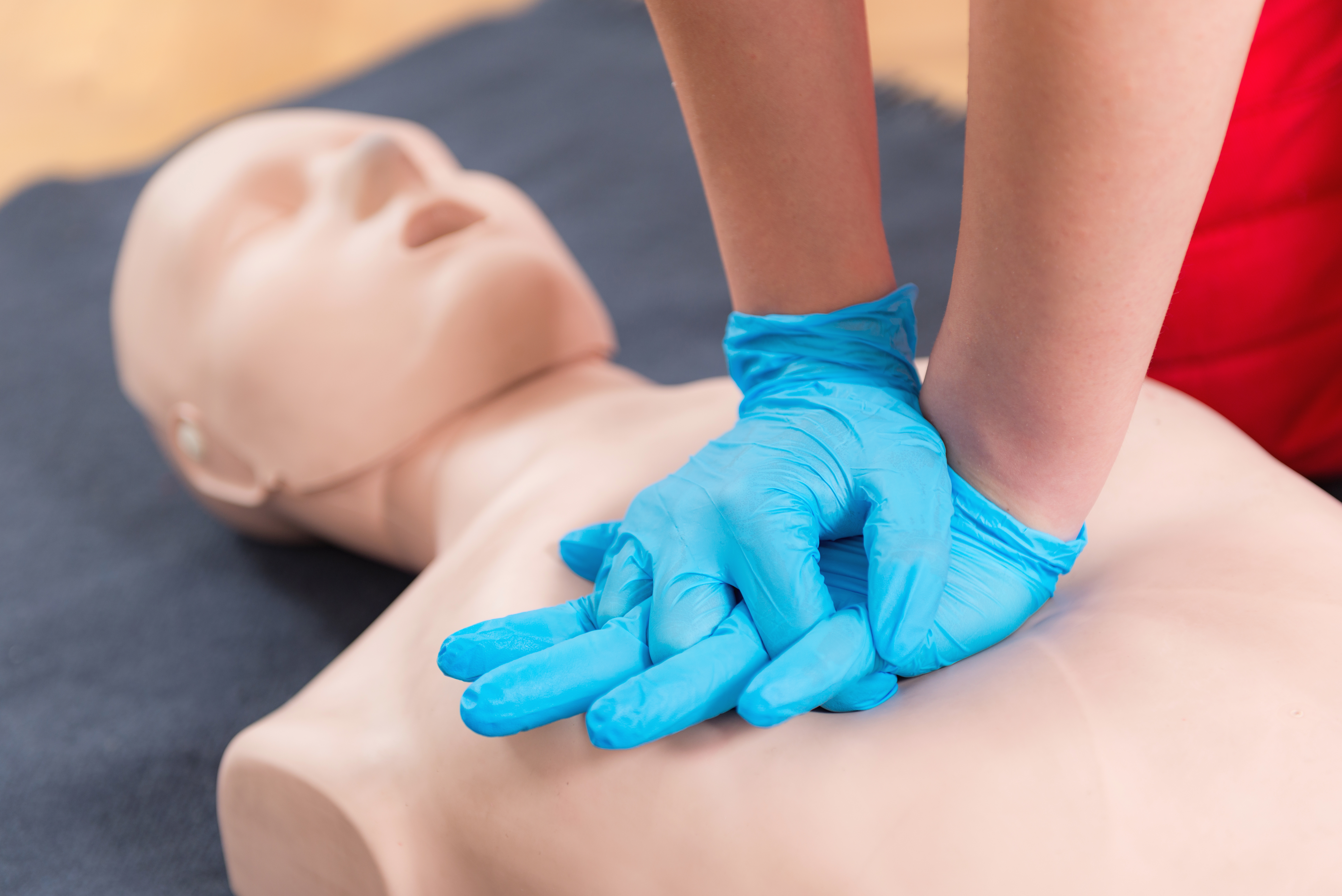Kent State University Registrar Chris Dorsten and Assistant University Registrar Adrianne Woods had to spring into action over the summer when a person went into cardiac arrest in Schwartz Hall where their offices are located.

For Dorsten, who had never been called upon to use the CPR training he received years ago, it was a daunting experience.

“I had CPR training in high school,” he said. “I have never had to use it and I wasn’t sure I was doing it correctly.”
Fortunately, their lifesaving efforts resulted in a successful outcome.
In fact, the patient passed on that the attending ICU doctor stated, “I do not know who those people are to you that immediately started CPR, but you owe them your life, literally.”
The experience, however, made Dorsten keenly aware of how important it is to be prepared should something happen, and he felt that message was worth sharing.
“The police told us that often people call 911 and then stand around and wait for help to get there, but that performing CPR is critical to saving the person’s life,” Dorsten said.
Kent State Police Chief Dean Tondiglia said the incident resulted in a life saved due to the quick actions of Dorsten and Woods and stressed that calling 911 first is most important, so that help can get there as soon as possible, and dispatchers can assist those at the scene.

“They did a phenomenal job,” he said.
Tondiglia said the most important aspect of CPR is the chest compressions that keep the heart pumping sending blood to the brain and other vital organs, increasing the chance of survival. “Those first seconds and minutes are critical,” he said.
In this instance, the police officer who arrived was able to shock the patient’s heart with a portable automated external defibrillator, or AED.
But even before the defibrillator was used, chest compressions were key, Tondiglia said.
“Our dispatchers are emergency medical dispatchers. They are trained to guide people through CPR,” Tondiglia said.
While someone going into cardiac arrest isn’t common, it has happened often enough over the past few years on the Kent Campus that Tondiglia can recall several incidents off the top of his head including one during the 2021-22 academic year when a student went into full cardiac arrest in his residence hall room and his roommate was able to perform CPR and save him with the guidance of police dispatchers.
“Our dispatchers can give step-by-step directions even if you have never given CPR before,” Tondiglia said.
There also have been several high-profile instances of athletes going into cardiac arrest, including Buffalo Bills safety Damar Hamlin during a game against the Cincinnati Bengals in January, and Bronny James, son of basketball superstar and Akron, Ohio native LeBron James, during a basketball practice at the University of Southern California in July.

Tondiglia said some Kent State buildings are outfitted with AEDs, particularly those used in athletics, or where large numbers of people visit, such as the University Library, Kent Student Center and Memorial Athletic and Convocation Center. But, all campus police carry an AED in their cruisers to have one available at every emergency scene. There is an AED in Schwartz Hall, and staff intend to add a second one due to this incident, Dorsten said.
It’s also a good idea for departments to discuss safety plans and protocols among their employees, Tondiglia said.
“Talk with your coworkers, and determine should something happen, how you would all work through it as a team,” he said.
Tondiglia said Kent State’s athletics staff are trained in performing lifesaving actions, as are the staff of the Warren Student Recreation and Wellness Center. For others, Tondiglia recommends CPR training, which is offered at the recreation center throughout the year.
“I encourage all people to sign up for the CPR training and become familiar with the AED and other devices,” he said.


Chris Baker, associate director of Facility Management and Operations, said the recreation center offers monthly classes for certifications in first aid, CPR, and operating an AED, which are open to all students, faculty, staff and center members. There is a fee for the training, which is provided by the American Red Cross.
In addition, Baker said he can schedule special sessions at a discounted rate for student organizations or groups of employees for departments that may want to train all their staff together.
“That’s another option to the public classes that we are trying to promote,” Baker said.
Regular classes are held from noon to 5 p.m. one Saturday per month.
Click here for CPR/AED certification class times, fees and registration information.

